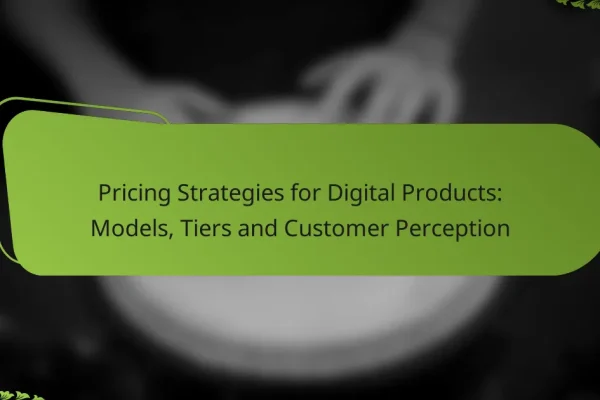
Marketing Metrics: Tracking, Analysis and Optimization
In the competitive landscape of marketing, tracking and analyzing metrics is essential for driving success….
Digital Products Mastery is your guide to creating and selling successful digital products. By understanding your audience and defining your product's unique value, you can employ effective strategies to resonate in the market. Explore the best platforms for selling, and learn targeted marketing techniques to enhance visibility and drive sales.

In the competitive landscape of marketing, tracking and analyzing metrics is essential for driving success. By establishing clear objectives and selecting appropriate measurement tools, businesses can gather relevant data that informs their strategies. Key metrics such as conversion rate, customer acquisition cost, and return on investment offer valuable insights, enabling informed decision-making and continuous optimization…

Choosing the right digital product hosting platform is crucial for ensuring scalability, security, and performance. With options like Amazon Web Services, Google Cloud Platform, and DigitalOcean, each platform offers unique features and pricing structures to accommodate various needs and budgets. Understanding these elements will help you select a solution that enhances user experience while effectively…

Subscription models have revolutionized access to digital products by providing users with flexible payment structures that align with their individual needs. By minimizing upfront costs and offering a variety of services, these models enhance affordability and accessibility, allowing consumers to select plans that best fit their usage patterns. Additionally, the diverse range of offerings available…

Exploring marketplaces for selling e-books reveals a range of options, each with distinct advantages and challenges. Platforms like Amazon Kindle Direct Publishing and Apple Books provide authors with increased visibility and streamlined sales processes, yet they also come with potential drawbacks such as high fees and limited pricing control. Understanding these factors is essential for…

Creating a successful online course requires careful planning, engaging content creation, and effective marketing strategies. By understanding your audience and defining clear objectives, you can structure your course to meet learners’ needs. Incorporating diverse formats and interactive elements enhances engagement, while targeted digital marketing techniques help maximize your course’s reach and impact. How to plan…

Effective budgeting for digital product development is essential for successful project execution, as it involves a comprehensive understanding of costs, resources, and timelines. By outlining anticipated expenses and necessary tools, you can allocate funds wisely and avoid overspending, ensuring that your product is developed efficiently and meets user needs. What are the costs of digital…

When deciding between a subscription model and a one-time purchase for digital products, it’s essential to consider your usage patterns and financial preferences. Subscriptions offer ongoing access and updates, making them ideal for users who seek continuous value, while one-time purchases provide full ownership without recurring fees, suitable for those who prefer a straightforward payment…

Pricing strategies for digital products are crucial for maximizing revenue and ensuring customer satisfaction. By understanding customer value perception, businesses can implement various models such as tiered pricing, freemium options, and subscriptions to meet diverse market demands. Each strategy not only influences how customers perceive value but also shapes their purchasing decisions in a competitive…

Choosing the right e-book design tool is essential for creating visually appealing and professional-quality publications. With options like Canva, Adobe InDesign, and Book Creator, users can find platforms that suit their design needs, usability preferences, and budget. Key features to consider include customization options, collaboration capabilities, and export functions, all of which play a crucial…

Influencer partnerships can significantly enhance brand visibility and engagement when executed thoughtfully. Selecting the right influencers whose values align with your brand is crucial for effective marketing. Engaging these influencers through personalized communication fosters long-term collaborations, while measuring the impact of these partnerships helps brands understand their effectiveness and optimize future strategies. How to select…
Creating successful digital products involves understanding your audience, defining your product's unique value, and employing effective development strategies. Focus on user needs and iterative improvements to ensure your product resonates in the market.
Identifying your target audience is crucial for developing a digital product that meets their needs. Conduct market research to gather insights about demographics, preferences, and pain points. Use surveys, interviews, and analytics to create detailed user personas.
Consider segmenting your audience based on factors like age, location, and interests. This helps tailor your product features and marketing strategies effectively, ensuring you reach the right people with the right message.
Your product value proposition clearly articulates why customers should choose your product over competitors. It should address specific problems your audience faces and highlight the unique benefits your product offers.
To craft a compelling value proposition, focus on clarity and conciseness. Use simple language and emphasize key differentiators, such as cost savings, time efficiency, or superior functionality. A strong value proposition can significantly enhance your marketing efforts.
Design thinking is a user-centered approach that fosters innovation and problem-solving in product development. It involves empathizing with users, defining their needs, ideating solutions, prototyping, and testing.
Incorporate feedback loops throughout the design process to refine your product. This iterative approach helps ensure that the final product aligns with user expectations and enhances usability, ultimately leading to higher satisfaction rates.
Agile development emphasizes flexibility and collaboration, allowing teams to respond quickly to changes and user feedback. By breaking projects into smaller, manageable increments, you can deliver features more rapidly and efficiently.
Utilize frameworks like Scrum or Kanban to organize your development process. Regular stand-up meetings and sprint reviews help maintain momentum and ensure that all team members are aligned with project goals.
Testing and iteration are vital for refining your digital product. Conduct usability tests with real users to identify issues and gather insights on user experience. This feedback is essential for making informed adjustments.
Adopt a mindset of continuous improvement. Use A/B testing to evaluate different versions of features and analyze user engagement metrics. Regularly updating your product based on user feedback keeps it relevant and competitive in the market.
The best platforms for selling digital products include Shopify, Gumroad, Teachable, and Amazon Kindle. Each platform caters to different types of digital products and offers unique features that can enhance your selling experience.
Shopify is a leading e-commerce platform that allows users to create online stores for selling various digital products, such as software, music, and graphics. It provides customizable templates and a user-friendly interface, making it accessible for beginners and experienced sellers alike.
Consider Shopify if you want to build a comprehensive online store with features like payment processing, inventory management, and marketing tools. Pricing starts at around $29 per month, with additional fees for premium features.
Gumroad is designed specifically for creators to sell digital products like art, music, and ebooks directly to consumers. It offers a simple setup process and allows creators to maintain a direct relationship with their customers.
Gumroad charges a small fee per transaction, making it cost-effective for those just starting. It's ideal for independent creators looking to sell without the complexities of a full e-commerce site.
Teachable is a platform tailored for educators and trainers to create and sell online courses. It provides tools for course creation, student management, and payment processing, making it easy to launch educational content.
With pricing plans starting at around $39 per month, Teachable is suitable for anyone looking to monetize their expertise. The platform supports various media types, including video, quizzes, and downloadable resources.
Amazon Kindle Direct Publishing (KDP) is a popular platform for authors to publish and sell e-books. It offers a vast audience through Amazon's marketplace and provides tools for formatting and marketing your book.
Authors can earn royalties of up to 70% on their sales, making it a lucrative option for those looking to reach readers worldwide. KDP also allows for easy updates and revisions to your e-book after publication.
To market digital products effectively, focus on targeted strategies that reach your ideal audience. This includes leveraging social media, utilizing email marketing, implementing SEO, and collaborating with influencers to enhance visibility and drive sales.
Social media advertising allows you to target specific demographics based on interests, behaviors, and location. Platforms like Facebook, Instagram, and LinkedIn offer robust advertising tools that can help you reach potential customers effectively.
Consider allocating a budget for paid ads, starting with a small amount to test different audiences and ad formats. Monitor engagement metrics to optimize your campaigns and improve return on investment.
Email marketing remains one of the most effective ways to engage with customers and promote digital products. Build a subscriber list through your website or social media, and segment it based on user behavior or preferences for targeted messaging.
Craft compelling email content that highlights product benefits, includes clear calls to action, and offers incentives like discounts or exclusive content. Aim for a consistent schedule to keep your audience engaged without overwhelming them.
Search engine optimization (SEO) is crucial for increasing organic traffic to your digital products. Focus on keyword research to identify terms your target audience is searching for and incorporate these into your website content, product descriptions, and blog posts.
Ensure your website is user-friendly and mobile-responsive, as this can significantly impact search rankings. Regularly update your content and consider building backlinks to enhance authority and visibility in search results.
Partnering with influencers can amplify your marketing efforts by leveraging their established audiences. Identify influencers in your niche who align with your brand values and have a genuine connection with their followers.
Negotiate collaborations that could include sponsored posts, product reviews, or giveaways. This approach can enhance credibility and expose your digital products to a wider audience, driving both traffic and sales.
Pricing strategies for digital products are essential for maximizing revenue and market reach. Common approaches include value-based pricing and the freemium model, each with unique benefits and considerations.
Value-based pricing focuses on setting prices based on the perceived value of the product to the customer rather than the cost of production. This strategy requires understanding your target audience's needs and how much they are willing to pay for the benefits your digital product offers.
To implement value-based pricing, conduct market research to gauge customer perceptions and willingness to pay. Consider factors such as competitive offerings and unique features that differentiate your product. For example, a software tool that significantly boosts productivity may justify a higher price point compared to similar tools.
The freemium model offers a basic version of the product for free while charging for premium features or services. This approach attracts a large user base quickly, providing opportunities to convert free users into paying customers over time.
When using the freemium model, ensure that the free version delivers sufficient value to entice users while leaving room for upgrades. Common pitfalls include offering too many features for free, which can limit revenue potential. A successful example is a cloud storage service that provides a limited amount of free storage but charges for additional space and advanced features.